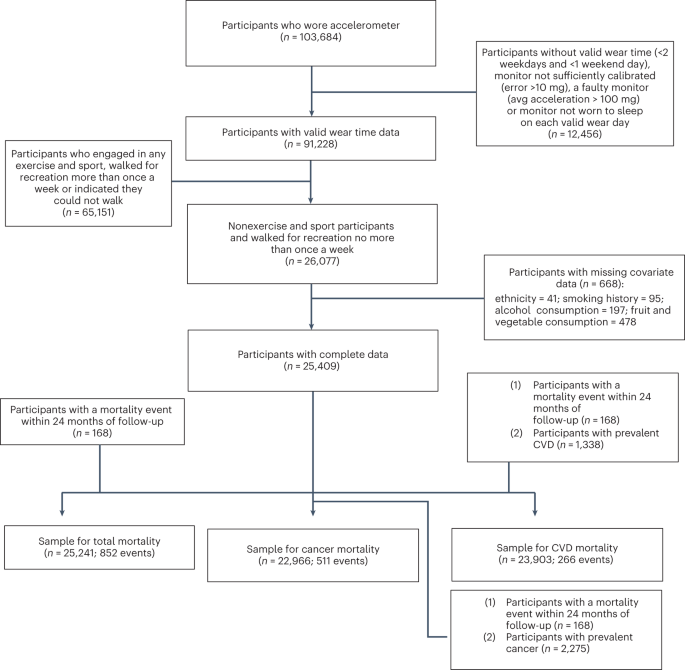odanny
Diamond Member
Further evidence that being sedentary is very detrimental, and any amount of exercise can pay off for your long term health.
Dashing up the stairs to your apartment, weaving between commuters as you dart toward the train — those small snippets of exercise, if they’re intense enough, can add up, according to a new study. The paper is among the first to examine what many exercise scientists have long hypothesized: A little bit of physical activity goes a long way, even movement you might not consider a workout.
The paper, published today in Nature Medicine, shows that tiny spurts of exercise throughout the day are associated with significant reductions in disease risk. Researchers used data from fitness trackers collected by UK Biobank, a large medical database with health information from people across the United Kingdom. They looked at the records of over 25,000 people who did not regularly exercise, with an average age around 60, and followed them over the course of nearly seven years. (People who walked recreationally once a week were included, but that was the maximum amount of concerted exercise these participants did.)
Those who engaged in one or two-minute bursts of exercise roughly three times a day, like speed-walking while commuting to work or rapidly climbing stairs, showed a nearly 50 percent reduction in cardiovascular mortality risk and a roughly 40 percent reduction in the risk of dying from cancer as well as all causes of mortality, compared with those who did no vigorous spurts of fitness.

 www.nature.com
www.nature.com

 www.nytimes.com
www.nytimes.com
Dashing up the stairs to your apartment, weaving between commuters as you dart toward the train — those small snippets of exercise, if they’re intense enough, can add up, according to a new study. The paper is among the first to examine what many exercise scientists have long hypothesized: A little bit of physical activity goes a long way, even movement you might not consider a workout.
The paper, published today in Nature Medicine, shows that tiny spurts of exercise throughout the day are associated with significant reductions in disease risk. Researchers used data from fitness trackers collected by UK Biobank, a large medical database with health information from people across the United Kingdom. They looked at the records of over 25,000 people who did not regularly exercise, with an average age around 60, and followed them over the course of nearly seven years. (People who walked recreationally once a week were included, but that was the maximum amount of concerted exercise these participants did.)
Those who engaged in one or two-minute bursts of exercise roughly three times a day, like speed-walking while commuting to work or rapidly climbing stairs, showed a nearly 50 percent reduction in cardiovascular mortality risk and a roughly 40 percent reduction in the risk of dying from cancer as well as all causes of mortality, compared with those who did no vigorous spurts of fitness.

Association of wearable device-measured vigorous intermittent lifestyle physical activity with mortality - Nature Medicine
Using data from wearable activity monitors, this study shows that short bursts of physical activity that are done as part of daily life activities and that are only 1 or 2 minutes in length are associated with lower mortality, similar to the effects of regular exercise.

Carry Your Groceries, Take the Stairs: Short, Intense Movement Can Improve Your Health (Published 2022)
A new study confirms that you don’t have to do a hard workout to reap the longevity rewards of exercise.